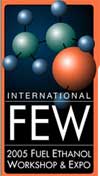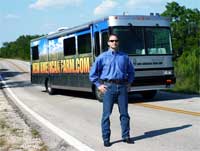I’ve been involved in more discussions about how to “track” news releases in the last few weeks than I can remember. That reminded me that it’s time for chapter 2 in this series, “Tracking News Releases.” In this chapter we’ll discuss how reporters use news releases, especially radio reporters since that’s our specialty.
Chapter 2
 Why didn’t anyone use my release right away? How do reporters decide to use my release? When will they use my release? Did they use the audio I sent?
Why didn’t anyone use my release right away? How do reporters decide to use my release? When will they use my release? Did they use the audio I sent?
In the first chapter I wrote about the news value of a release, which is the most important aspect of a release. I’m finding that a lot of public relations people don’t understand how a release is used by the reporter though. Many assume that the release is used immediately or not at all. They don’t realize that unless the story is time sensitive it can often be archived for future use. I’ve seen releases used months after they were received. I’ve done it myself!
Even a well written release that has a news angle to it (we don’t want written commercials!) won’t get used immediately unless the reporter has room in their publication or program and needs to fill space or time. These releases may often be placed in a folder or file for use when the reporter needs some “news.”
Many reporters I know won’t just cut and paste the release either. They will often re-write it to fit their style and medium. The end result may not even resemble the original release. Then it’s even harder to know if the release was used.
Most releases contain quotes from company representatives like the CEO or a technician and reporters often like to call a local contact for a quote, especially radio reporters. When this happens it also makes it hard to tell if they used the release you sent out. They may get a local customer or representative to say the very same thing but then they make the story more interesting to their listeners while feeling more in control of the news. . . (full article)

 At the end of last week the big news was the BSE announcement by USDA. As big as that news was it’s not something for the public to be alarmed about and that’s the word you can hear in this week’s
At the end of last week the big news was the BSE announcement by USDA. As big as that news was it’s not something for the public to be alarmed about and that’s the word you can hear in this week’s 
 Now that’s what I’m talking about. Go to the opening event for a little ag-itude adjustment! I can’t be there though, bummer. Maybe they’ll send along some pictures to share.
Now that’s what I’m talking about. Go to the opening event for a little ag-itude adjustment! I can’t be there though, bummer. Maybe they’ll send along some pictures to share. Want to know how the “largest retail farm & ranch store chain” is doing? Just log onto their webcast.
Want to know how the “largest retail farm & ranch store chain” is doing? Just log onto their webcast. I knew this wasn’t going to sit well with everyone and I’m sure we’re going to hear a lot more about it. We reported recently on the introduction of a new
I knew this wasn’t going to sit well with everyone and I’m sure we’re going to hear a lot more about it. We reported recently on the introduction of a new  As you may now know, ZimmComm is working in cooperation with the
As you may now know, ZimmComm is working in cooperation with the  Tommorow it’s off to Kansas City for the
Tommorow it’s off to Kansas City for the  This week the
This week the  Now here’s a deal I haven’t seen before. You know I’m a Sirius subscriber since I’ve written about it before. I’ve been wondering when or how or if the satellite radio people will try to target the most logical immediate customers for their product. It looks like they’ve been doing a little work. Although farmers are just “regular” people who like all that programming wouldn’t it be nice if they offered farm news?
Now here’s a deal I haven’t seen before. You know I’m a Sirius subscriber since I’ve written about it before. I’ve been wondering when or how or if the satellite radio people will try to target the most logical immediate customers for their product. It looks like they’ve been doing a little work. Although farmers are just “regular” people who like all that programming wouldn’t it be nice if they offered farm news? This is what I call a “revolutionary” way to get out and solicit some business. I’m thinking AgWired Bus! Nothing like borrowing a good idea. Of course it would have to have satellite high speed internet access but wouldn’t that be a cool way to blog around the countryside? In fact, I’ve suggested that
This is what I call a “revolutionary” way to get out and solicit some business. I’m thinking AgWired Bus! Nothing like borrowing a good idea. Of course it would have to have satellite high speed internet access but wouldn’t that be a cool way to blog around the countryside? In fact, I’ve suggested that  Austin, TX – New American Farm, a farmer-owned production company, announced today that it will launch a 60-city, five-month tour that will cover an estimated 10,000 miles and five states across the Midwest on Thursday, June 23, 2005.
Austin, TX – New American Farm, a farmer-owned production company, announced today that it will launch a 60-city, five-month tour that will cover an estimated 10,000 miles and five states across the Midwest on Thursday, June 23, 2005.